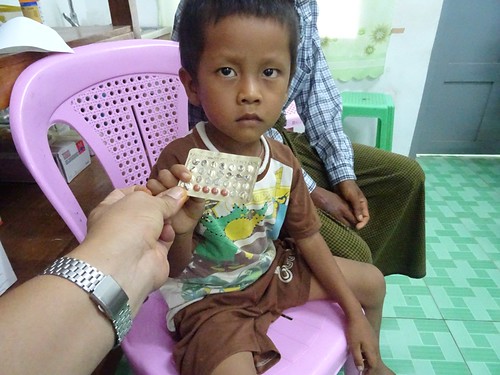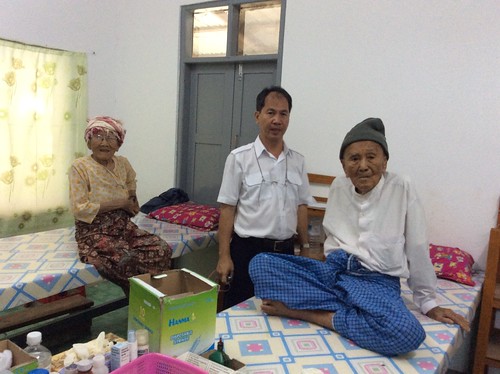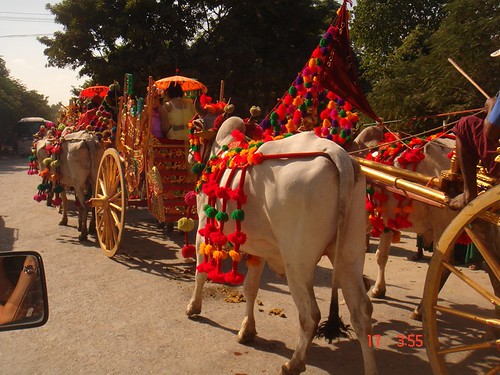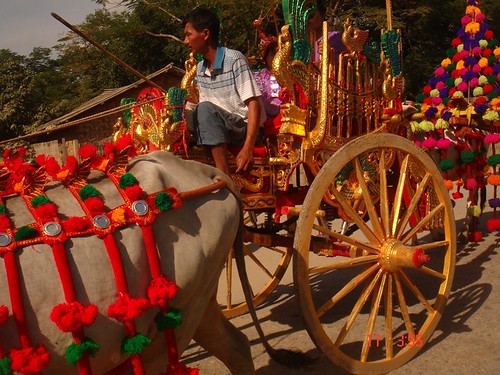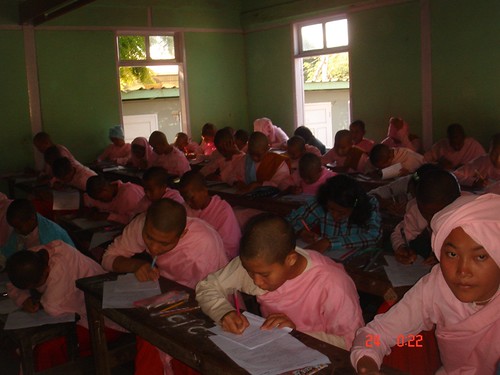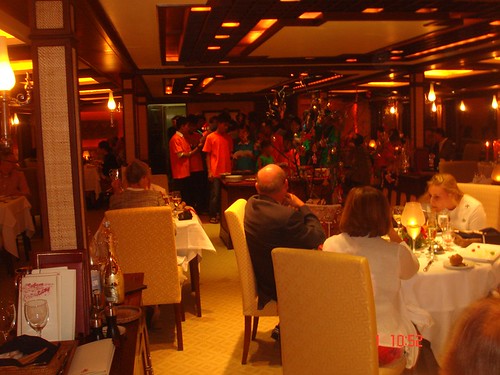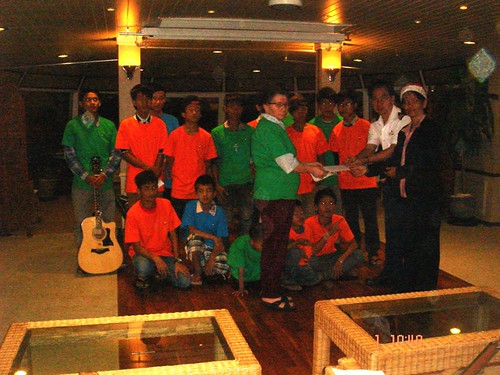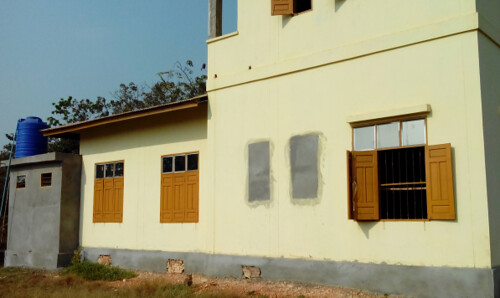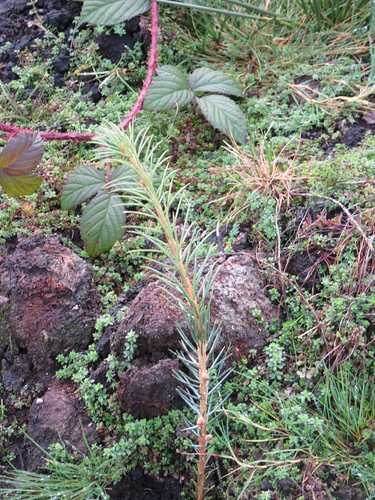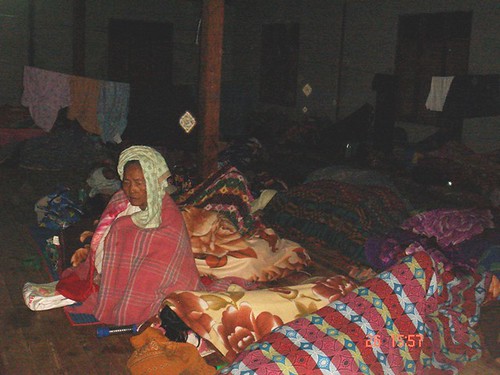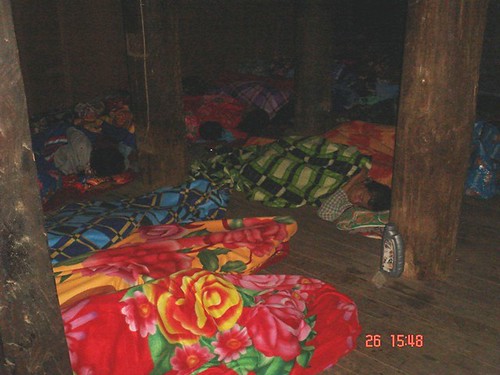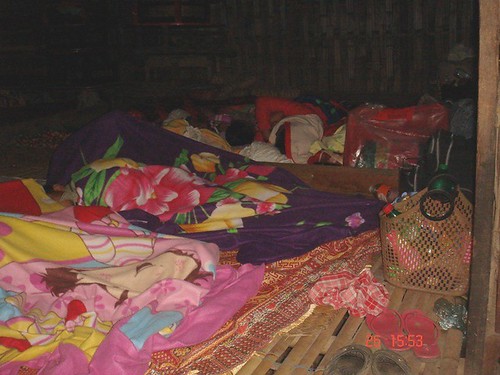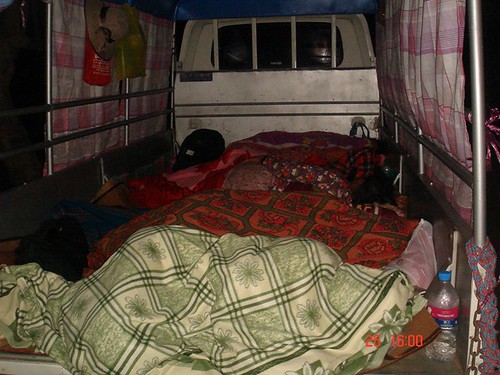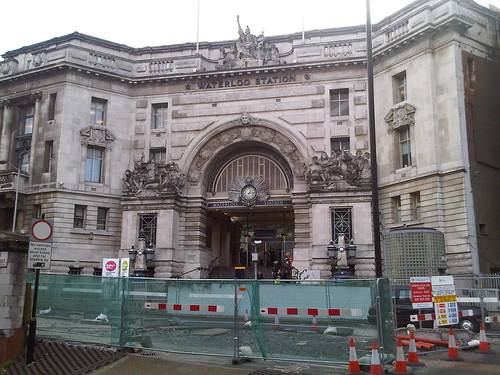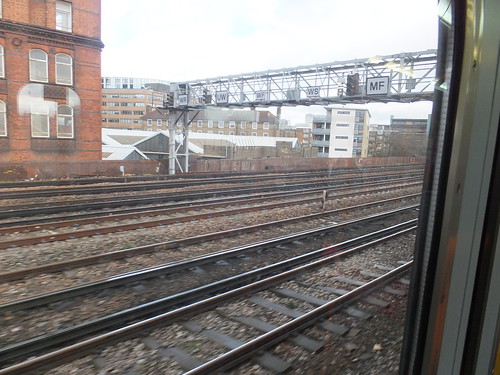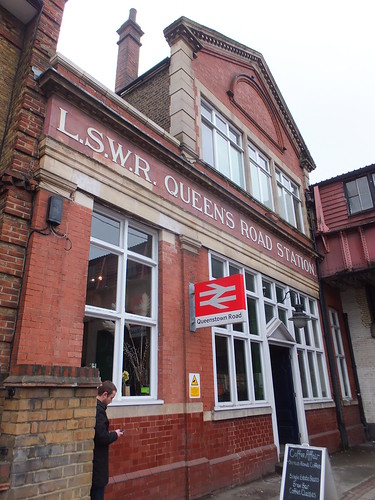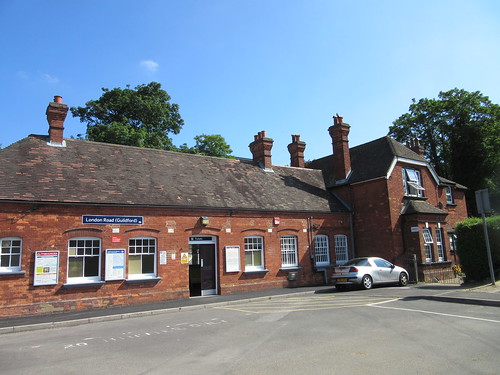Sunday, 6th December 2015
On the second day of the Santa service I was booked to drive, with Mike S. as fireman. Having prepared 'Lord Phil' and topped-up the bunker with coal, we coupled onto the south end of the 7-coach train ready to 'top and tail' with the 'Class 31' diesel-electric which had been left coupled at the north end overnight. We were nice and early so, before the first departure at 10:45, we had over an hour to perform 'carriage warming', supplying steam at 30 p.s.i. via the Reducing Valve to the heating system on each of the coaches. The weather was fairly mild for December and, although we had intermittent rain during the day, it was reasonably pleasant.
Rowsley Station had been decorated for Christmas and looked quite inviting. All tickets on the 'Santas' are pre-booked and volunteer helpers are always in demand to deal with the large number of passengers. Santa had a number of Elves and other helpers in attendance to assist in distributing presents to the children whilst the grown-ups enjoy mulled wine and a mince pie during the journey to Matlock Town and back.
As the passengers arrived, there was quite a pleasant atmosphere of anticipation, particularly when Santa patrolled the platform greeting the boys and girls together with professional entertainers who juggled, did magic and clowned. There was also a reindeer and a bear.

Santa poses for the camera before resuming greeting the visitors. The reindeer and bear are in the background.
In addition, a choir sang Christmas Carols on the platform at Rowsley as passengers boarded the train.
 The choir perform in front of the decorated station buildings at Rowsley.
The choir perform in front of the decorated station buildings at Rowsley.
The two coaches marshalled next to the steam locomotive at the south end form the 'Palatine Set' comprising one full restaurant car and a restaurant/bar/kitchen car. The 'Palatine Set' was thronged with staff preparing to serve Christmas Lunch to the diners on the second departure from Rowsley at 12:18.
Santa trains are often a little late departing because of booked passengers arriving late but, as far as possible, the timetable is adhered to. With the number of speed restrictions on the route, it's difficult to make up time.
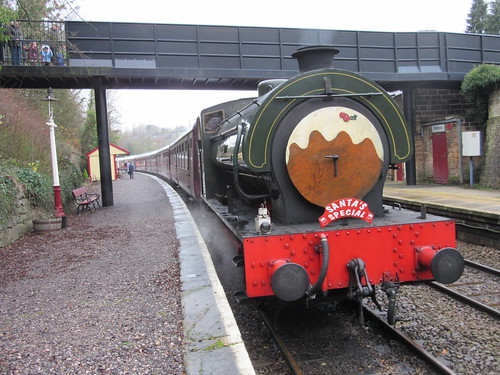 'Lord Phil' on arrival at Matlock Town, with 'Christmas Pudding' smokebox decoration and 'Santa's Special' headboard. It is displaying a tail lamp, ready for the return journey.
'Lord Phil' on arrival at Matlock Town, with 'Christmas Pudding' smokebox decoration and 'Santa's Special' headboard. It is displaying a tail lamp, ready for the return journey.
The 'Class 31' hauled the train back to Rowsley where Mike and I replenished the saddle tank. The water consumption is increased, of course, when supplying steam to heat the train. With the diners and booked passengers aboard, we set off on our second round trip. This was completed without incident, with Mike using the classic "little and often" method of firing. We didn't need to top-up with water this time.
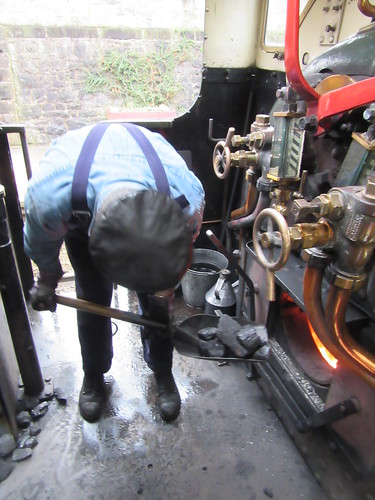
Mike using the classic "little and often" method of firing.
The train was very busy on the two round trips in the afternoon during which parties of adults arrived by, I think, at least four large motor coaches. After the third round trip, we filled the saddle tank, this time with me perched on top of the engine, allowing me to take a couple of pictures from my elevated position.
 A view of Rowsley whilst taking water. On the far left, the maroon exhibition coach is visible, stabled on the turntable siding.
A view of Rowsley whilst taking water. On the far left, the maroon exhibition coach is visible, stabled on the turntable siding.
On the last trip to Matlock, it was starting to grow dark so we lit the locomotive paraffin lamps, displaying a white near the chimney on the way there, changing to a red tail lamp on the buffer beam for the journey back. There's a little piece about lamps here.
 'Lord Phil' at Matlock Town, displaying a lit tail lamp.
'Lord Phil' at Matlock Town, displaying a lit tail lamp.
The 'Class 31' took us back to Rowsley for the last time, pausing briefly in the Down platform at Darley Dale. Now it was properly dark, the illuminated Christmas decorations on both platforms showed up well, encouraging a number of passengers to take photographs of the displays.
On arrival, we were given the single line token, allowing us to uncouple from the train and make our way, via the loop and third line, to the North end where we surrendered the token to the diesel crew, so that they could stable their locomotive in the shed on No. 1 road. Meanwhile, we took 'Lord Phil' to the siding outside the shed, so that Chris could coal our bunker using the Bucket Loader. We then made our way back to the North end and attached the exhibition coach from the turntable siding. With Jacob acting as guard, we propelled the coach over the third line back onto the loop. We then drew the coach along the loop, stopping where instructed adjacent to the main train. With the coach 'tied down' and uncoupled, it was now our turn to make our way to No. 1 road where we carried out the disposal procedures and stabled 'Lord Phil' over the outside pit.
Go to 'Santa Specials' at Peak Rail - Christmas 2015 (part 2)
My pictures
Peak Rail 'Santa' Trains - 2015.


